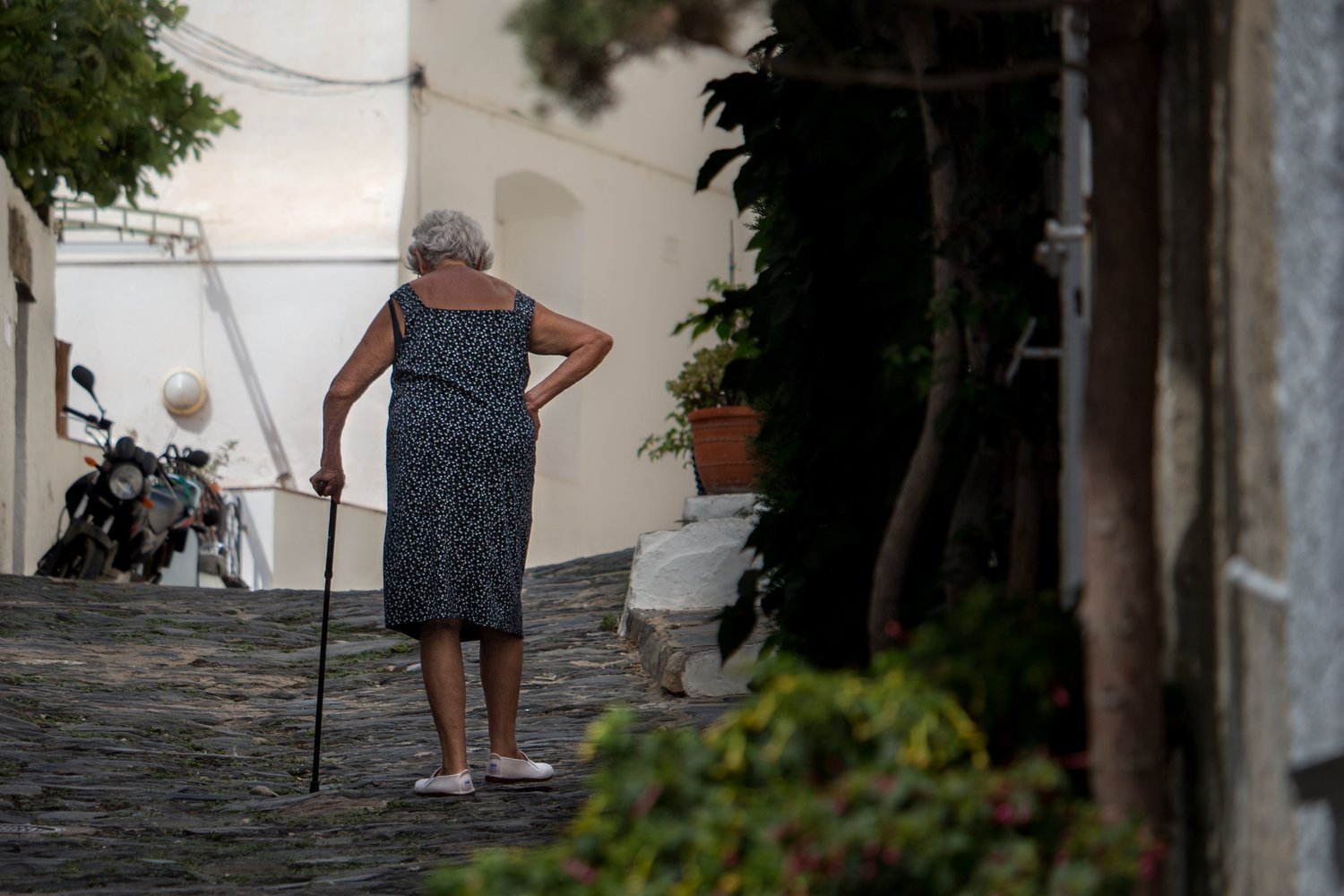Completed Research Projects
Men on the Move
Men on the Move was a randomized controlled trial for inactive older men. We evaluated the feasibility and health impacts of a 12-week choice-based physical activity intervention paired with an active transportation intervention on mobility and physical activity outcomes.
The choice-based physical activity intervention encouraged older men to use existing community-based resources to create and implement actions plans for physical activity. It also provided ongoing face-to-face and telephone-based support from trained activity coaches and complimentary recreation passes.
The active transportation intervention provided personal travel planning and complimentary transit passes to promote use of public transportation and walking to destinations of interest. Men on the Move involved partnerships with the British Columbia Recreation and Parks Association and community centres in Vancouver.
We also conducted a number of ancillary studies to Men on the Move to learn more about supporting older men’s physical activity and mobility. These included a formative evaluation to understand the process of program implementation, a photovoice study to explore the meaning of mobility among older men, and an iPad study of repeated daily-life assessments to tap into psychological constructs related to physical activity.
Collaborators: Dr. Dawn Mackey, Dr. Heather McKay, Dr. Joanie-Sims Gould, Dr. Christianne Hoppman, Dr. Adrian Bauman.
Funding: CIHR Team Grant in Boys’ and Mens’ Health
Key Personnel: Alexander Perkins, Kara Delaney, Kaitlin Hong Tai
Publications: Journal of Aging and Physical Activity, American Journal of Men’s Health, Translational Journal of the American College of Sports Medicine, Canadian Journal on Aging
THE FLOORING FOR INJURY PREVENTION (FLIP) STUDY
Falls are the leading cause of injury-related hospitalization and death among older adults and are responsible for annual direct costs of $3.4 billion in Canada, $34 billion in the USA, and more than £2 billion in the UK. Fall-related injuries can lead to serious consequences for older adults, including increased risk of dependence in daily activities and mortality. Long-term care is a particularly high-risk environment – rates of falls and injuries are 2-3 times higher in long-term care residents than among community-dwelling older adults.
The Flooring for Injury Prevention (FLIP) Study was a 4-year randomized controlled trial that aimed to determine the effect of compliant (‘safety’) flooring on fall-related injuries among residents of long-term care. We conducted the FLIP Study in partnership with the New Vista Care Home in Burnaby, British Columbia, where 150 resident bedrooms underwent flooring renovations for this study in 2013. Then we tracked all falls and injuries in these bedrooms, as well as resulting healthcare utilization to diagnose and treat fall-related injuries. Ultimately, we sought to determine whether compliant flooring is an effective intervention for reducing the incidence and severity of fall-related injuries in long-term care, and if so, whether it is a wise investment.
Collaborators: Dr. Dawn Mackey, Dr. Stephen Robinovitch, Dr. Fabio Feldman, Dr. Andrew Laing, Dr. Chantelle Lachance, Dr. Joan Hu, Pet-Ming Leung, Leslie Karmazinuk
Funding: CIHR Team Grant in Strategic Teams in Applied Injury Research, CIHR Team Grant in Mobility and Aging, Fraser Health, the New Vista Society, the Centre for Hip Health and Mobility, SATech, Inc.
Key Personnel: Rania Khelifi, Amanda Zacharuk, Emaan Abbasi, Kristina Collins, Peiwei Wang, Eva Habib, Jenna Chow, Valeriya Zaborska, Michal Jurkowski, Kelsey Aimar, Veronica Tsai
Publications: Injury Prevention, PLOS Medicine, The Conversation
Scoping Review on Compliant Flooring
Compliant flooring is an intervention that may reduce the incidence and severity of fall-related injuries in healthcare settings, including acute and long-term care, but few sites have implemented compliant flooring. Health care decision makers have indicated that one barrier to uptake is lack of synthesized evidence about key performance aspects of compliant flooring.
To address this gap, we conducted a ‘scoping review’ (a type of literature review) to describe the extent, range, and nature of research activity about compliant flooring, as well as to identify gaps in research. We searched six academic databases (to find published studies on compliant flooring) and various sources of grey literature (to uncover unpublished information).
Two researchers systematically screened records for eligibility, extracted data from 84 eligible records, and synthesized results from these records according to four themes: biomechanical efficacy, clinical effectiveness, cost-effectiveness, and workplace safety. Toward the goal of meeting the information needs of healthcare decision makers tasked with preventing fall-related injuries, we delivered a webinar in partnership with CADTH and distributed a Research Brief summarizing the results of this review.
Collaborators: Dr. Dawn Mackey, Dr. Stephen Robinovitch, Dr. Fabio Feldman, Dr. Andrew Laing
Funding: CIHR Knowledge Synthesis Grant
Key Personnel: Dr. Chantelle Lachance, Michal Jurkowski, Ania Dymarz
Publications: BMJ Open, PLoS One, Research Brief
Ergonomic Evaluation of Compliant Flooring
Compliant flooring aims to prevent fall-related injuries among older adults, including residents of long-term care. Compliant flooring also impacts the working conditions of long-term care staff, but research on this topic has been very limited. In particular, due to its low stiffness and susceptibility to deform under load, compliant flooring may increase rolling resistance versus standard flooring. In turn, maneuvering wheeled equipment (e.g., patient lifts, wheelchairs, carts) on compliant flooring could expose long-term care staff to higher forces than standard flooring.
In this project, we quantified the hand forces required for long-term care staff to push loaded floor-based lifts and wheelchairs over compliant flooring relative to standard flooring. We also assessed staff perceptions of pushing difficulty and compared forces to tolerance limits. We conducted this project in partnership with Revera’s Royal City Manor long-term care home in New Westminster, British Columbia.
Collaborators: Dr. Stephen Robinovitch, Dr. Fabio Feldman
Funding: SFU President’s Research Start-up Grant, CIHR Team Grant in Strategic Teams in Applied Injury Research, CIHR Team Grant in Mobility and Aging, SATech, Inc, CIHR Frederick Banting and Charles Best Canada Graduate Scholarship, AGE-WELL Graduate Student Award in Technology and Aging, MSFHR Scholar Award
Key Personnel: Dr. Chantelle Lachance, Dr. Alexandra Korall, Colin Russell
Publications: Human Factors, Journal of Applied Ergonomics
Perceptions of Compliant Flooring
Compliant flooring aims to prevent fall-related injuries in high-risk health care environments, such as long-term care. But, uptake of compliant flooring has been limited. Guided by the knowledge-to-action framework, we explored barriers and facilitators to adoption of compliant flooring as a fall-injury prevention strategy within long-term care, and we identified pressing directions for future research. We did this by conducting in-depth interviews with senior managers from long-term care, and we hosted an interactive one-day stakeholder symposium with decision makers from health care, industry, and research.
Collaborators: Dr. Stephen Robinovitch, Dr. Fabio Feldman, Pet-Ming Leung
Funding: CIHR Knowledge Synthesis Grant, CIHR Frederick Banting and Charles Best Canada Graduate Scholarship, AGE-WELL Graduate Student Award in Technology and Aging, MSFHR Scholar Award
Key Personnel: Dr. Chantelle Lachance, Valeriya Zaborska
Publications: Canadian Journal on Aging, Journal of Housing for the Elderly
THE HEALTHYSTEPS STUDY
The amount of energy required to walk a given distance (termed ‘energy cost of walking’) increases progressively with age. This can make walking and other daily activities fatiguing and contribute to diminished mobility.
We conducted the HealthySteps Study to test whether specific forms of group-based exercise can reduce the energy cost of walking in older adults who report a mobility limitation (e.g., difficulty walking outside on level ground or climbing a flight of stairs without resting).
In this randomized controlled trial, one group of participants completed 12 weeks of twice-weekly ‘timing and coordination of gait training,’ and another group of participants completed 12 weeks of twice-weekly ‘outdoor aerobic walking’. At the end of the exercise program, we compared the energy cost of walking and other measures of mobility in each of these intervention groups against a control group of participants who completed 12 weeks of twice-weekly stretching and relaxation. The results of this study will help to inform the design of exercise programs for older adults to promote mobility and make walking easier.
Collaborators: Dr. Dawn Mackey, Dr. Jessie van Swearingen, Dr. Jennifer Schrack
Funding: The Drummond Foundation, NSERC
Key Personnel: Kristina Collins, Michelle Pospisil, Veronica Tsai, Bonnie McCoy, Danielle Scheier, Debbie Sharun
Publications: Innovation in Aging
THE STRIDES STUDY
The STRIDES Study (Step Tracking Reliability In DEvices worn by Seniors) was conducted to determine the criterion validity and test-retest reliability of step counting in six commercial-grade activity monitors in mobility-intact and mobility-limited older adults during over-ground walking.
To assess criterion validity, participants completed long-distance walks that mimic conditions experienced during daily walking. To assess test-retest reliability, participants completed two shorter distance walks.
Results will help inform choices of activity monitors for future studies of older adults that aim to detect changes in activity levels, assess adherence to a physical activity program, quantify daily physical activity patterns, or use activity monitors as a motivational tool to support physical activity promotion.
Collaborators: Dr. Dawn Mackey, Dr. David Clarke, Dr. Scott Lear, Dr. Meghan Donaldson, Dr. Stirling Bryan
Funding: SFU President’s Research Start-up Grant, SFU Community Trust Endowment Fund (LiVWELL), NSERC, MSFHR Scholar Award
Key Personnel: Stephanie Maganja, Amandeep Gill, Kaitlin Hong Tai
Publications: JMIR Formative Research
Pre-Dialytic Exercise for Hemodialysis Patients
The number of Canadians receiving treatment for kidney failure has more than tripled over the past twenty years. Hemodialysis patients have poor health outcomes compared to healthy populations, low functional status and physical functioning, high mortality rates, reduced quality of life, and an increased likelihood of experiencing symptoms of depression. Increasing the level of exercise among hemodialysis patients has been well researched as a feasible intervention to offset the poor physical and mental health outcomes in this population.
The Pre-Dialytic Exercise for Hemodialysis Patients project investigated the effects of a 12-week thrice weekly exercise program delivered immediately prior to dialysis on the physical performance, mental and emotional well-being, and quality of life of hemodialysis patients. The results of this pragmatic study informed the Fraser Health Authority on the feasibility and benefits of maintaining a similar program at their Community Dialysis Units.
Collaborators: Dr. Dawn Mackey, Dr. Fabio Feldman, Pet-Ming Leung
Funding: The Kidney Foundation of Canada
Key Personnel: Ashley Kwon, Shianne Bains
Effect of Financial Incentives on Physical Activity in Older Adults: A Systematic Review
The health benefits of physical activity are irrefutable, but the vast majority of older adults do not meet national physical activity guidelines. To improve adherence, behavioural economics has prompted the development of financial incentive interventions to promote physical activity. Financial incentives can stimulate positive health-related behaviour change by providing fast and tangible rewards, helping to overcome barriers to the uptake and maintenance of regular physical activity.
This systematic review summarized the design and effectiveness of past financial incentive interventions to promote physical activity among older adults. The results provide an improved understanding of the current evidence base in addition to gaps in the existing literature. In the long term, these findings may help inform programs and policies to improve older adult engagement in physical activity.
Collaborators: Dr. Dawn Mackey
Funding: SFU Big Data USRA, MSFHR Scholar Award
Key Personnel: Emaan Abbasi, Nicole Whittle
Using business analytics to identify older Canadian adults at risk of chronic disease
Chronic diseases exert an enormous burden on older adults in Canada. Approximately 9 out of 10 older adults report having at least one chronic condition, while more than 2 out of 3 older adults report having two or more chronic conditions. Healthcare costs due to increased spending on the treatment of chronic diseases are increasing at an unsustainable rate. Physical activity is recognized as a critical component in the prevention and management of chronic diesases. But, health care decision makers need better ways of knowing who's at risk for developing chronic diseases, so that can target physical activity interventions and allocate other prevention resources most efficiently.
The aims of this study were therefore to 1) apply modelling techniques from the field of business analytics to predict the presence of certain chronic diseases among older Canadian adults, and 2) calculate the expected healthcare costs of older adults based on their predicted probabilities of these chronic diseases.
To achieve this, we used demographic, lifestyle, and medical data from a nationally representative sample of older adults enrolled in the Canadian Longitudinal Study on Aging. Guided by data mining techniques that are designed to detect complex relationships in real-world data, the results of this study represent an initial step toward identifying subpopulations of older adults who would benefit from chronic disease prevention efforts.
Collaborators: Dr. Dawn Mackey, Dr. David Whitehurst, Dr. Guy Faulkner
Funding: MSFHR Scholar Award
Key Personnel: Timothy Ainge









